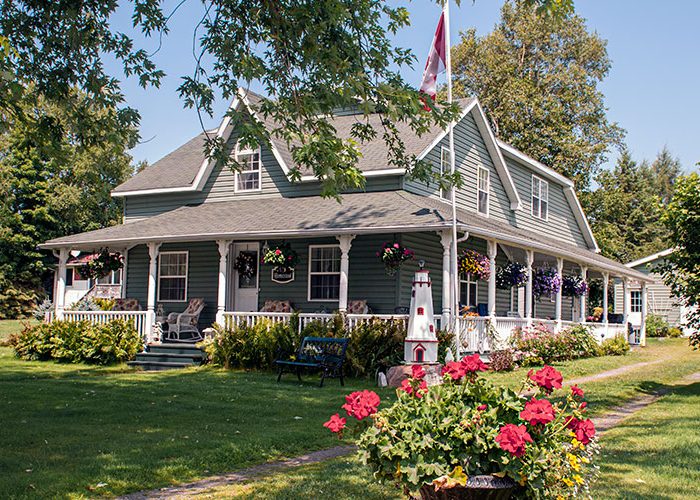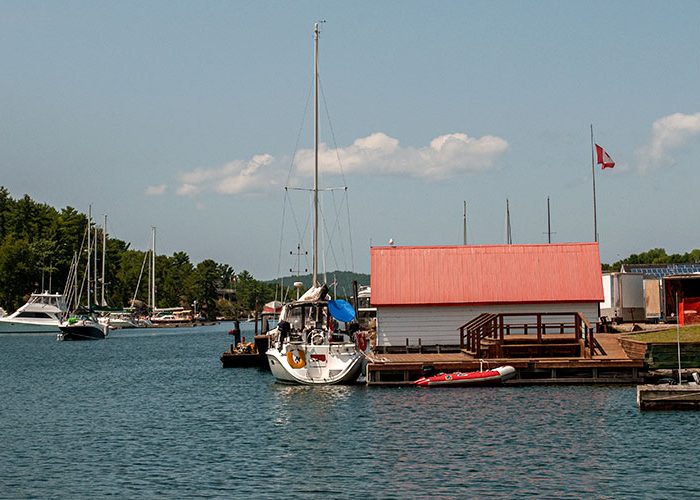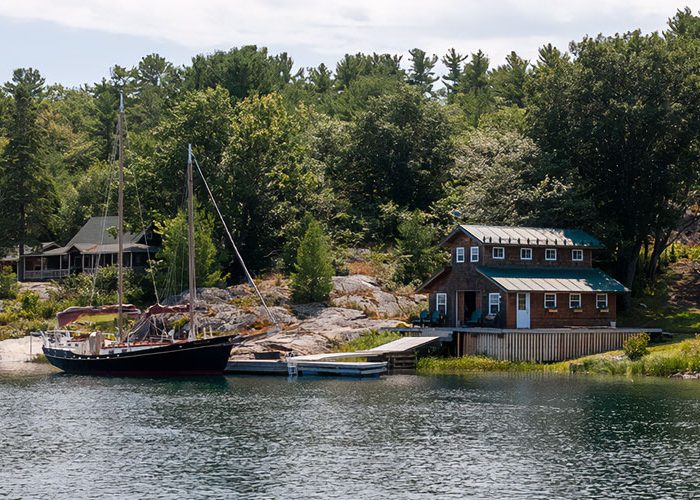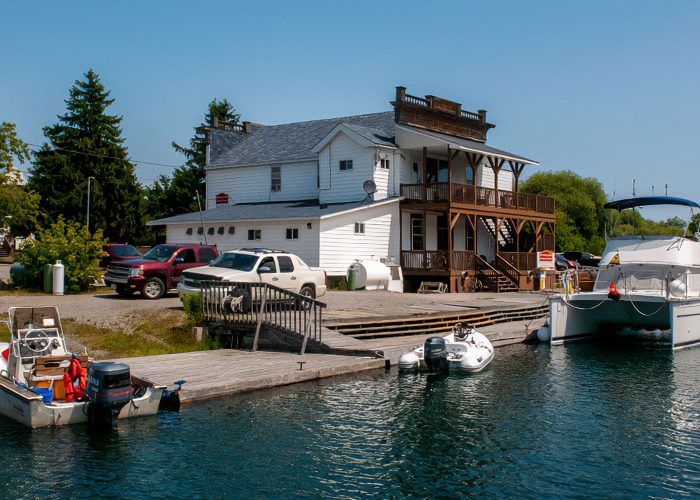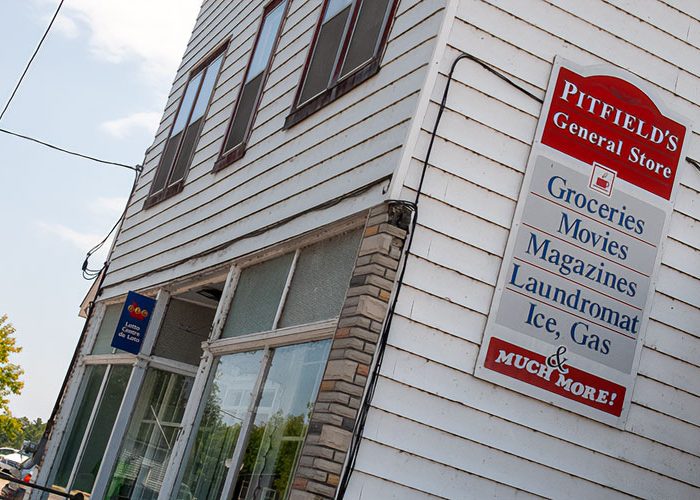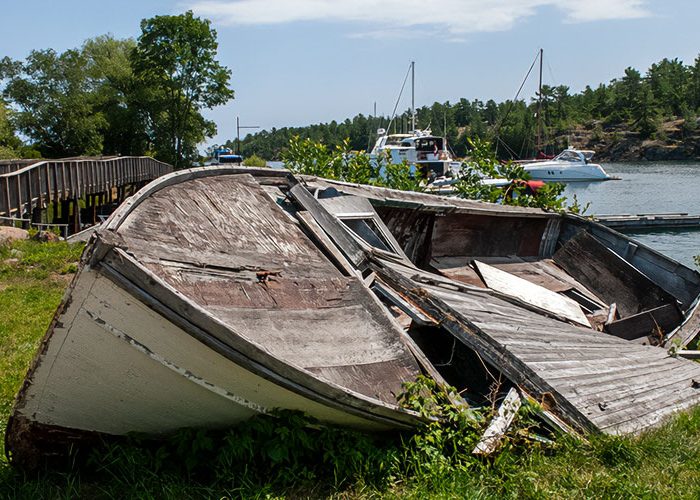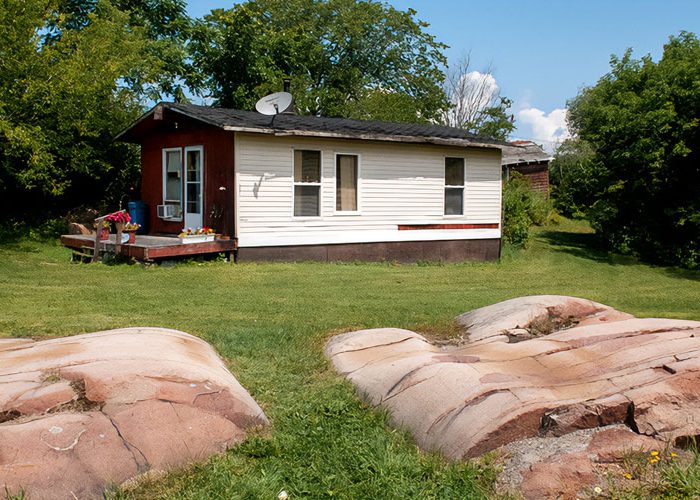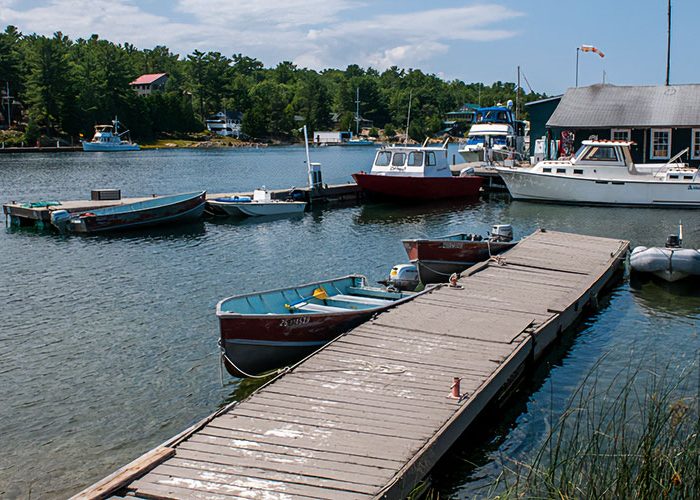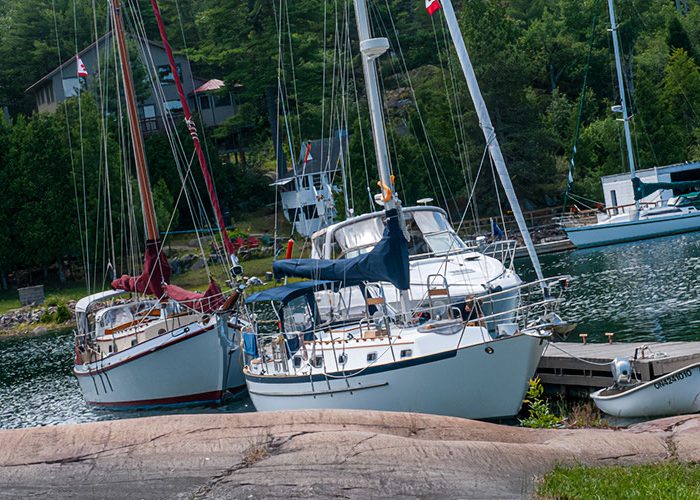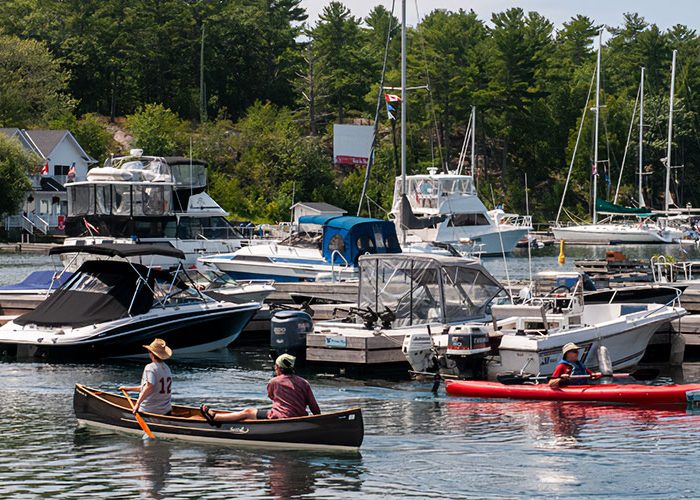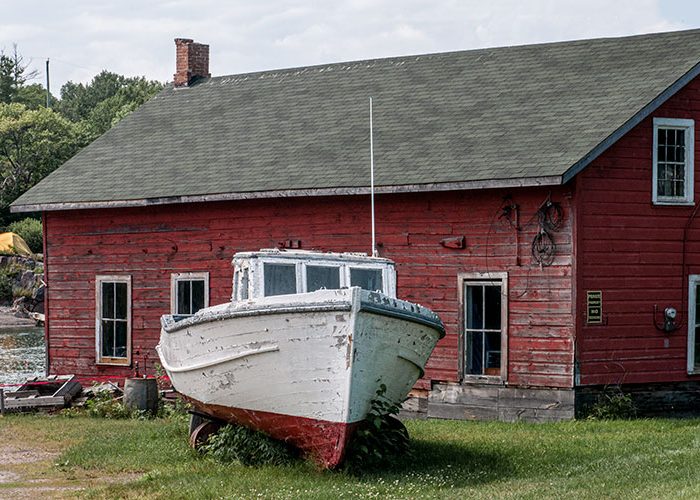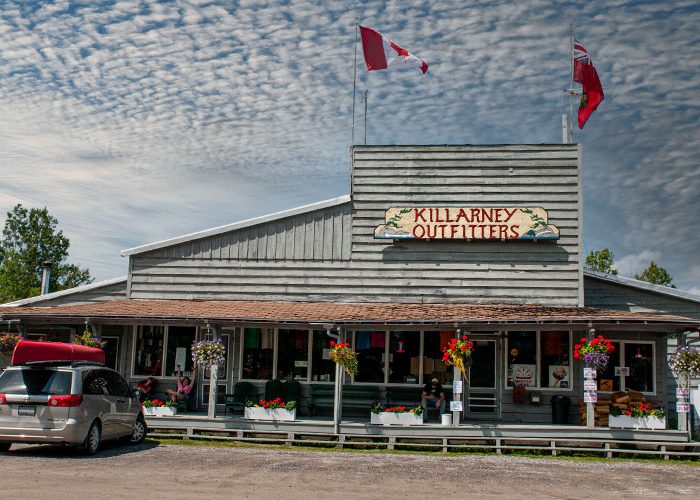The village of Killarney can be found at the end of the peninsula, about 10 km from Killarney Provincial Park. It is made up of Killarney red granite, which is characteristic of the entire Georgian Bay area. The narrow channel between the island and the peninsula was known as the Ojibway Shebahonaning or Shebawenahning, meaning “here is a safe canoe channel”.
The place became famous for many hunters and fur traders.
One of them, Etienne Augustin Rochbert de la Morandiere established a homestead and trade post here on June 28, 1820 and he was the first white settler.
Until the 1860s, it was a trading center for many Indians, trappers and traders, and lumbermen.
In 1854, a post office officially opened here. Although some accounts state that the name Shebahonaning was not changed to Killarney until 1882, the first postage stamp bore both names in 1854.
In 1868 a mill was established at Collins Inlet, about 15 km east of Killarney. During the lumbering era the whole area prospered from 1800 to 1900. Then the trees were essentially cut down. The trees that were exported were red and white pine, spruce, hemlock, cedar, ash, birch, maple and oak.
There was also mining. A small gold deposit was discovered in the area in 1911 a and in the same year, about 6 km west of town at Badgeley Point, silica mining began. It continued until 1970.
Interestingly, the only access to Killarney was by water.
There is still a small harbour here, which in 1875 had a regular service between Killarney and Owen Sound. Commercial fishing has also disappeared as the fish have been taken.
It was not until 1956 that construction of a new road began. It was completed in 1961.The Killarney Provincial Park opened here in 1964 and the whole area came to life for the second time in history. After the hunters and traders come the tourists.
Website Killarney Provincial Park >>
